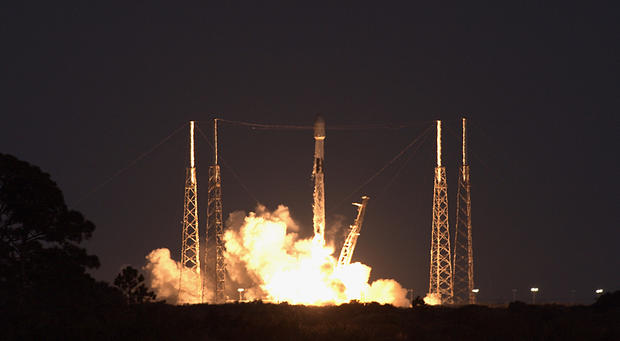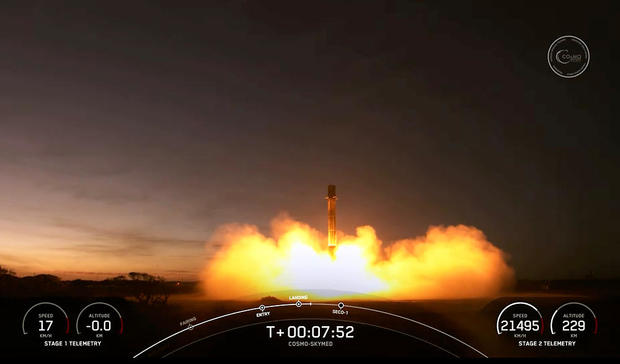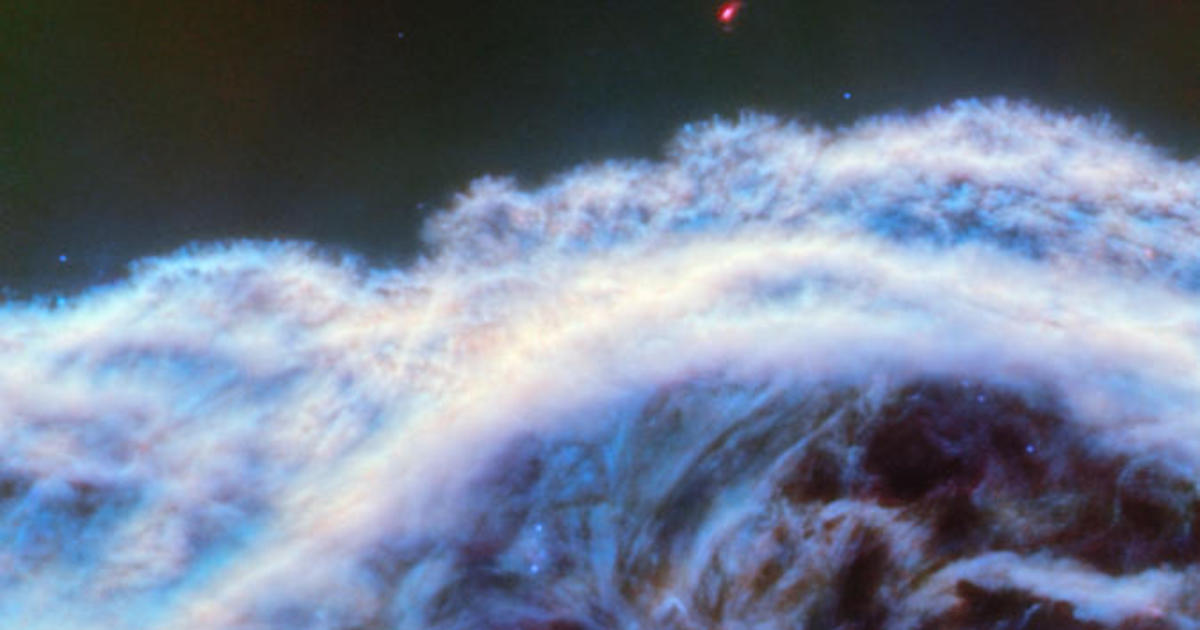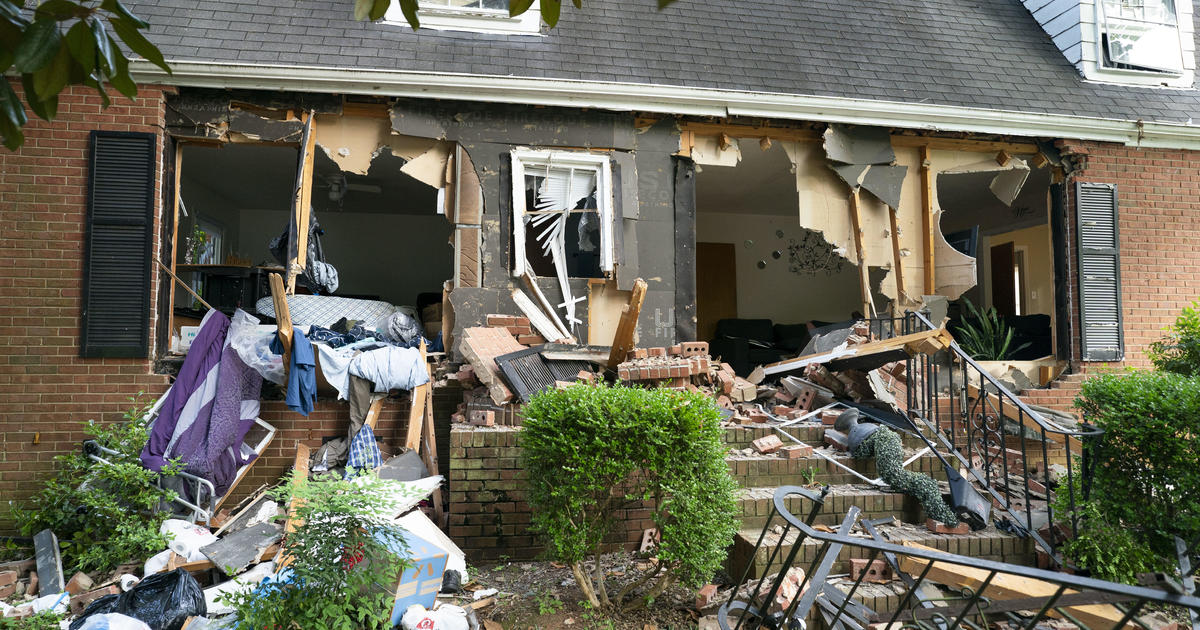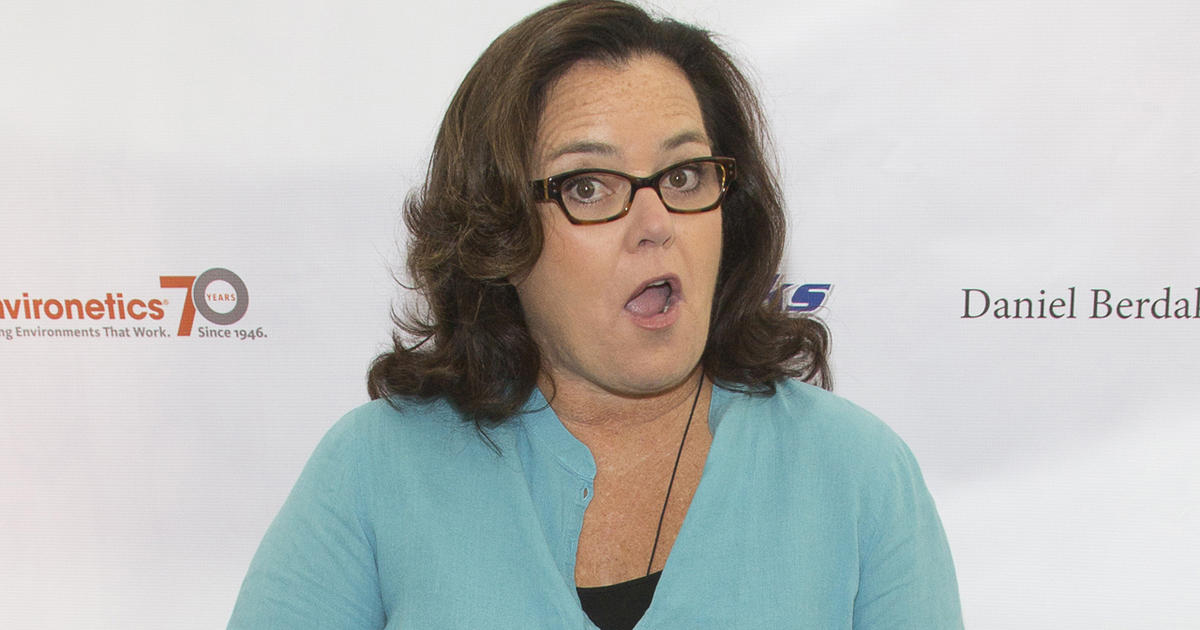SpaceX launches Italian remote sensing satellite in spectacular fashion
After three weather delays and a scrub Sunday due to a wayward cruise ship, a SpaceX Falcon 9 rocket finally blasted off Monday on its fifth try, putting on a spectacular sunset sky show as it climbed toward orbit, dropping off its first stage booster along the way for a fiery descent to touchdown at the Cape Canaveral Space Force Station.
Thanks to a cloudless sky, area residents and tourists, including passengers on just-departed cruise ships, were able to see the entire sequence, from launch to landing, while observers closer to the Space Force station were rocked by twin shotgun-like sonic booms.
Using a first stage booster that was making its third flight, the Falcon 9 rocketed skyward at 6:11 p.m. EST, arcing away to the south toward a 385-mile-high orbit tilted nearly 98 degrees to the equator.
After boosting the payload out of the lower atmosphere, the first stage separated, flipped around and flew itself back to landing at the Space Force station, chalking up SpaceX's 104th successful booster recovery and its 22nd in Florida.
The second stage, meanwhile, carried out two firings of its single vacuum-rated engine to reach the planned polar orbit. The COSMO-SkyMed satellite was released to fly on its own about an hour after liftoff.
Launch originally was planned for last Thursday, but the flight was delayed two days in a row by bad weather. SpaceX opted to pass up a launch opportunity Saturday due to high winds. The weather was ideal Sunday, but another scrub was ordered when a cruise ship departing Port Canaveral strayed into the off-shore danger zone.
While more cruise ships headed out Monday, the Falcon 9 was cleared for launch and successfully delivered its payload to the desired orbit.
COSMOS-SkyMed is the second in a new generation of imaging radar remote sensing satellites built by Thales Alenia Space for the Italian Space Agency.
Observing the entire planet as it rotates beneath them, the COSMO-SkyMed radar satellites provide agriculture mapping, disaster monitoring and environmental observations around the clock, immune to changes in lighting or the presence of clouds that would thwart visible light cameras.
The satellites can resolve surface features smaller than a yard across when zoomed in on a specific target. They also can operate in "stripmap" mode, observing a continuous strip of land, or in a third mode that captures imagery of an area 124 miles to either side of a satellite's ground track.
Since launch of the initial first-generation satellites in 2007, 2 million images have been sent down, covering 2.8 billion square miles, or about 14 times the entire area of planet Earth. Using four satellites, sites can be revisited for updated imagery in as little as two hours.
Monday's launch was SpaceX's fourth so far this year, keeping up a rapid-fire tempo after a record 31 launches last year. The company plans up to 52 launches in 2022, averaging one per week, according to retired NASA astronaut Sandra Magnus.
Now a member of NASA's Aerospace Safety Advisory Panel, Magnus said the launch rate poses challenges to both SpaceX and NASA, which relies on Falcon 9 rockets and Crew Dragon capsules to ferry astronauts to and from the International Space Station.
"NASA has several crew rotation flights on SpaceX in the pipeline during 2022, plus SpaceX has a private mission to the ISS via Axiom 1," she told the panel Thursday, referring to a launch paid for by Houston-based Axiom Space. "If anything, NASA and SpaceX will have to be watchful during 2022 that they are not victims of their success."
"There's an ambitious 52-launch manifest for SpaceX over the course of the year, and that's an incredible pace. And both NASA and SpaceX will have to ensure the appropriate attention and priority are focused on NASA missions and that the right resources are brought to bear to maintain that pace (in safety)."
